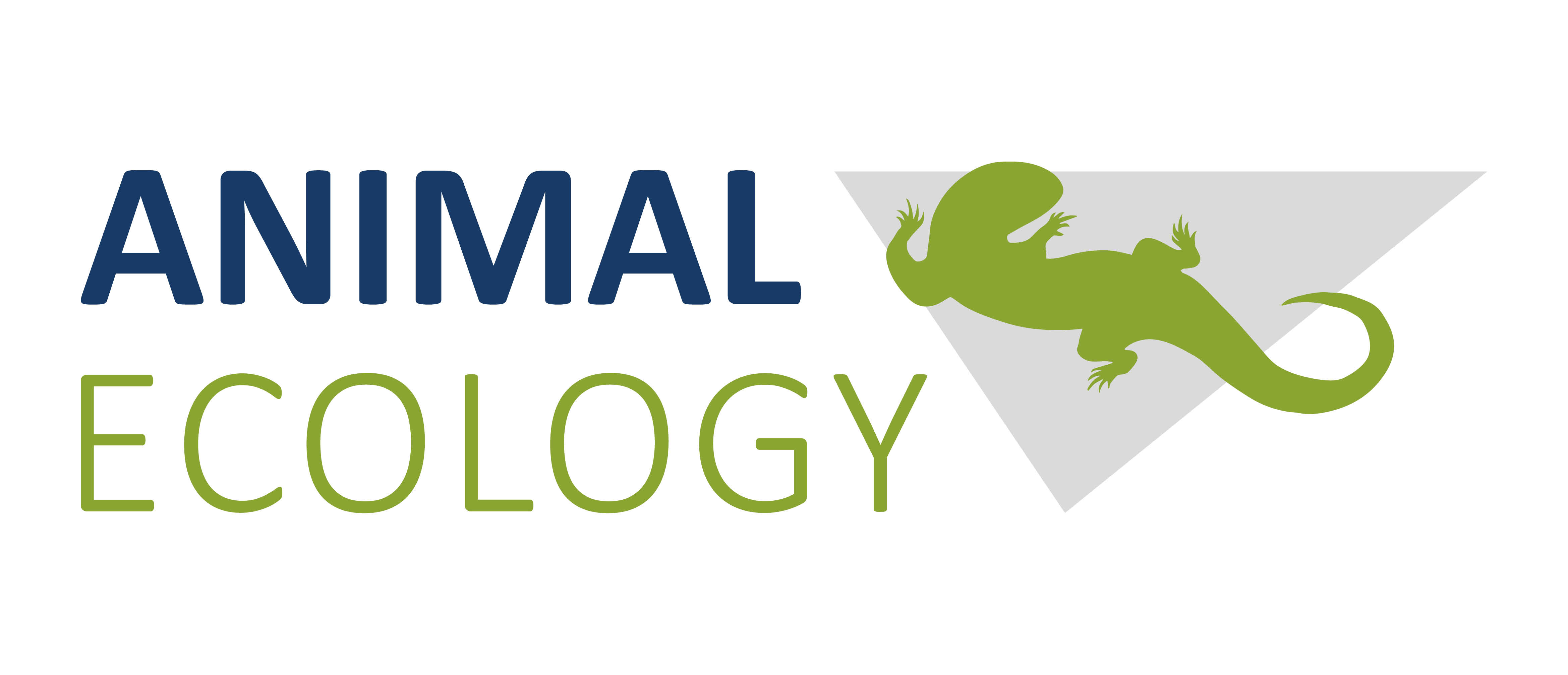
DR. Hilke Hollens-Kuhr
AG Tierökologie
Institut für Landschaftsökologie
Heisenbergstr. 2, 48149 Münster
Raum 537
Telefon +49(0)251-83 30 012
E-Mail hilke.hollens-kuhr[at]uni-muenster.de
Sprechstunde Dienstag 10:30-12:00 und nach Vereinbarung
Promotion
Pflanzen-Bestäuber Interaktionen in einem Biodiversitäts-Hotspot
- Betreuer
- Professor Dr. Hermann Mattes
- Promotionsfach
- Landschaftsökologie
- Abschlussgrad
- Dr. rer. nat.
- Verleihender Fachbereich
- Fachbereich 14 – Geowissenschaften
Vita
Akademische Ausbildung
- Promotion in Landschaftsökologie (Dr. rer. Nat.), WWU Münster
- Diplom-Landschaftsökologie, WWU Münster
Beruflicher Werdegang
- Wissenschaftliche Mitarbeiterin im Institut für Landschaftsökologie an der Westfälischen Wilhelms-Universität Münster (WWU)
Lehre
- Seminar: S Methoden und Experimente der Tierökologie [142703]
(zusammen mit Dr. Nadja Pernat)
[ - | | wöchentlich | Fr | GEO1 513 | Dr. Nadja Pernat] - Seminar: S Multitrophische Interaktionen [142704]
(zusammen mit Prof. Dr. Sascha Buchholz)
[- | Blockveranstaltung (Mo-Fr) | Prof. Dr. Sascha Buchholz] - Seminar: S Physische Geographie Südafrikas [142723]
[ - | | wöchentlich | Di | GEO1 401 | Dr. Hilke Hollens-Kuhr] - Exkursion: Exk. Nordost-Griechenland [140748]
(zusammen mit Dr. Nadja Pernat, Fabian Karwinkel, Marie Mohr, Prof. Dr. Sascha Buchholz, Anita Eggert) - Projektveranstaltung: P Projektpraktikum Tierökologie [140687]
(zusammen mit Dr. Nadja Pernat, Prof. Dr. Sascha Buchholz)
[ - | | wöchentlich | Di | GEO1 513 | Prof. Dr. Sascha Buchholz]
[n. V. | Prof. Dr. Sascha Buchholz] - Ü Zoolog. Bestimmungsübungen A [140679]
(zusammen mit Dr. Nadja Pernat, Prof. Dr. Sascha Buchholz)
[ - | | wöchentlich | Mo | Prof. Dr. Sascha Buchholz]
[n. V. | Prof. Dr. Sascha Buchholz] - Ü Zoolog. Bestimmungsübungen B [140680]
(zusammen mit Dr. Nadja Pernat, Prof. Dr. Sascha Buchholz)
[ - | | wöchentlich | Mo | Prof. Dr. Sascha Buchholz]
[n. V. | Prof. Dr. Sascha Buchholz] - Ü Zoolog. Bestimmungsübungen C [140681]
(zusammen mit Dr. Nadja Pernat, Prof. Dr. Sascha Buchholz)
[ - | | wöchentlich | Mo | Prof. Dr. Sascha Buchholz]
[n. V. | Prof. Dr. Sascha Buchholz] - Übung zur physischen Geographie/Landschaftsökologie, Kurs A [140688]
(zusammen mit )
[ - | Dr. Hilke Hollens-Kuhr]
[Dr. Hilke Hollens-Kuhr] - Übung zur physischen Geographie/Landschaftsökologie, Kurs B [140689]
(zusammen mit Dr. Reinhard Wolff)
[ - | Dr. Reinhard Wolff]
[Dr. Reinhard Wolff] - Übung zur physischen Geographie/Landschaftsökologie, Kurs C [140690]
(zusammen mit Dr. Reinhard Wolff)
[ - | Dr. Reinhard Wolff]
[Dr. Reinhard Wolff] - Übung zur physischen Geographie/Landschaftsökologie, Kurs D [140691]
(zusammen mit )
[ - | Dr. Hilke Hollens-Kuhr]
[Dr. Hilke Hollens-Kuhr] - Vorlesung: V Einführung in die physische Geographie I [148743]
(zusammen mit Prof. Dr. Laura Stutenbecker, apl. Prof. Ute Hamer, Dr. Reinhard Wolff) - Seminar: S Methoden und Experimente der Tierökologie [148699]
(zusammen mit Dr. Nadja Pernat) - Seminar: S Multitrophische Interaktionen [148700]
(zusammen mit Prof. Dr. Sascha Buchholz) - Seminar: S Physische Geographie Südafrikas [148724]
- Seminar: S Methoden und Experimente der Tierökologie [142703]
Publikationen
- Pernat, Nadja, Buchholz, Sascha, Kriegs, Jan Ole, Steen, Jan, und Hollens-Kuhr, Hilke. . „Moving north under the eye of the public: the dispersal ecology of the Nosferatu spider, documented by citizen scientists.“ Basic and Applied Ecology, Nr. 84: 40–49. doi: 10.1016/j.baae.2025.02.002.
- Hollens-Kuhr, Hilke, Buchholz, Sascha, und Pernat, Nadja. . „‘Nature of the year’ in Germany: An effective policy to raise public awareness?“ People and Nature, Nr. 7 (7): 1477–1768. doi: DOI: 10.1002/pan3.70062.
- Krüger, Jula-Klarissa, Buchholz, Sascha, Schmitt, Sophie, Blankenhaus, Katharina, Pernat, Nadja, Ott, David, und Hollens-Kuhr, Hilke. . „You are what you eat – The influence of polyphagic and monophagic diet on the flight performance of bees.“ Ecology and Evolution, Nr. 14 (9) e70256. doi: 10.1002/ece3.70256.
- Hollens-Kuhr, H., van der Niet, T., Cozien, R., und Kuhlmann, M. . „Pollinator community predicts trait matching between oil-producing flowers and a guild of oil-collecting bees.“ American Naturalist, Nr. 198 (6): 750–758. doi: 10.5061/dryad.mw6m905x4.
- Kahnt, B., Theodorou, P., Soro, A.Hollens-Kuhr H., Kuhlmann, M., Pauw, A., und Paxton, R.J. . „Small and genetically highly structured populations in a long-legged bee, Rediviva longimanus, as inferred by pooled RAD-seq.“ BMC Evolutionary Biology, Nr. 18 (1): 1–12. doi: 10.1186/s12862-018-1313-z.
- Hollens, H. . „Plant-pollinator interactions in a biodiversity hotspot - Pollination ecology and evolutionary processes in oil-collecting Rediviva bees and their oil-producing Diascia host plants in the South African winter rainfall region.“ Dissertationsschrift, Universität Münster.
- Hollens, H, Van der, Niet T, Cozien, R, und Kuhlmann, M. . „A spur-ious inference: Pollination is not more specialized in long-spurred than in spurless species in Diascia-Rediviva mutualisms.“ Flora, Nr. 232: 73–82. doi: 10.1016/j.flora.2016.12.006.
- Kuhlmann, M, und Hollens, H. . „Morphology of oil-collecting Pilosity of Female Rediviva Bees (Hymenoptera: Apoidea: Melittidae) reflect Host Plant Use.“ Journal of Natural History, Nr. 49 (9-10): 561–573. doi: 10.1080/00222933.2014.939732.
- Kuhlmann, M, und Hollens, H. . „Morphology of oil-collecting pilosity of female Rediviva bees (Hymenoptera: Apoidea: Melittidae) reflect host plant use.“ In Integrating ecological knowledge into nature conservation and ecosystem management, herausgegeben von J Mantilla-Contreras und R Pätsch.
- Johnson, S.D., Hollens, H., und Kuhlmann, M. . „Competition versus facilitation: conspecific effects on pollinator visitation and seed set in the iris Lapeirousia oreogena.“ Oikos, Nr. 121: 545–550. doi: 10.1111/j.1600-0706.2011.19516.x.
- Hollens, Hilke, Wünsch, Yvonne, und Buchholz, Sascha. . „Die Webspinnenfauna des Borghorster und Emsdettener Venns – Rückzugsräume für gefährdete und stenotope Arten.“ Natur und Heimat - floristische, faunistische und ökologische Berichte, Nr. 69: 117–140.
- Kuhlmann, M, Timmermann, K, und Hollens, H. . „Size matters – influence of Mediterranean climate on body size evolution in bees?“ Beitrag präsentiert auf der Origin and Evolution of Biota in Mediterranean Climate Zones – an Integrative Vision, Zurich


